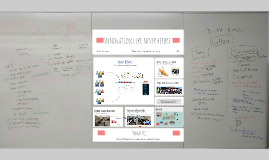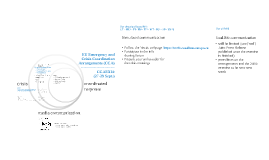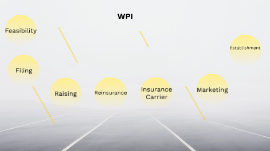WPI@NITI
Transcript: GoI working group on base year revision of Wholesale Price Index(WPI) from 2011-12 to 2022-23 TIMELINE Circular 1- 30 Dec' 2024 on constitution of working group Composition: Chairman - Prof Ramesh Chand Members - 17 Nodal office: Office of Economic Adviser(OEA), Department for Promotion of Industry & Internal Trade Final submission date of report by working group to OEA: June 2026 (18 months from the constitution) Terms of Reference: -Suggest commodity basket of WPI and PPI with base year 2022-23 -suggest changes for system of price collection -Decide on computational methodology to be adopted for WPU/PPI - Composition 1.Chairman: Prof. Ramesh Chand, Member, NITI Aayog Members: 2.Additional Director General, Field Operations Division, Ministry of Statistics & P.I 3.Deputy Director General, Economic Statistics Division, Ministry of Statistics & P.I 4.Deputy Director General, National Accounts Division, Ministry of Statistics & P.I 5.Deputy Director General, Enterprise Survey Division, Ministry of Statistics & P.I 6. Economic Adviser, Department of Economic Affairs 7. Adviser, Price & Marketing Division, Department of Agriculture & Farmers Welfare 8.Senior Economic Adviser, Department of Consumer Affairs 9.Deputy Director General, Ministry of Petroleum & Natural Gas 10. Chief Executive Officer, Goods & Services Tax Network 11. Representative from RBI 12. Dr Soumya Kanti Ghosh, Chief Economist, SBI Group Member (Non-official) 13. Dr Surjit Bhalla, Economist 14. Dr Shamika Ravi, Member, Economic Advisory Council to PM 15. Dr Dharmakirti Joshi, Chief Economist, Crisil 16. Shri Nilesh Shah, MD, Kotak Mahindra Asset Management 17. Shri Indranil Sengupta, Co-Head & Economist, Bank of America Merrill Lynch 18. Deputy Director General, DPIIT (Member Secretary) Circular 2 2. First meeting of the working group- NITI Bhawan Office memorandum - 31 Jan' 2025 -MoSPI intimated that 2022-23 may be the next common base year. Accordingly, working committee was made. -Five sub-groups are formed on specific areas. Reports to be submitted withing 6 months from 1.3.2025 - Following officials are coopted the members of the working group 1. Shri AK Sadhu, member NSC and former DG, MoSPI 2. Shri Arun Kumar, Sr Economic Advisor, DAFW 3. Dr Yogesh Suri, Programme Director (Cosumer Affairs, Food and Public Distribution), NITI Aayog 4. Shri Alok Chandra, Director General, Labour Bureau 5. Dy. Director General, Price Statistics Division, MoSPI - For next meeting: 1. Broad results of WPI with base 2017-18 should be presented for enabling improvement in 2022-23 series 2. Updates of progress made by subgroups have to be placed There was a presentation by Shri Rajesh Kumar Sharma, Deputy Director General DPIIT -Use of periodic base revision of WPI by public and private agencies including in GDP, IIP compilations -Presentation of trial WPI with base 2017-18 -Presentation if tria PPI for output goods(Total final use) as per IMF Technical Mission's methodology - Decision in the high-level meeting regarding not to launch the WPI/PPI series with base 2017-18 I. Subgroup on Analytical and Dissemination Issues Terms of Reference 1. Review the method of treating imputed price quoted by factories for items that require further processing (molasses) 2. Review the method of treating temporarily non responding quotations 3. Suggest method of adjusting prices of tailor-made goods 4. Suggesting a linking factor from old to new WPI 5. Recommend a roadmap for India to switch over from the WPI to the PPI ORDER on sub-groups Composition(11): Chairman : Shri AK Sadhu, Ex DG, SS, CSO, MoSPI Member Secretary: Representative, OEA Members: Dr Shamika Ravi, Member, Economic Advisory counsil to PM Dr. Dharmakriti Joshi, Chief Economist, CRISIL Shri Indranil Sengupta, Prof at Shivnadar University Adviser(Prices), Dept of Economic affairs Deputy Director General of National Accounts Division, Price Statistics Division, Economic Statistic Division of MoSPI RBI Representative, Statistics Department Representative from NIPFP II. Sub-Group on Agricultural Commodities Terms of Reference -Screening of Agricultural items included in the current series -Selection of representative varieties, market centres in respect of each selected commodity and suggestion of important markets for the price quotations. -Examine the issue of seasonality of Agricultural items -Review data processing and validation method Composition 1. Chairperson Shri Arun Kumar, Senior Economic and Statistical Adviser, DAFW Members: 2.Senior Adviser, Agriculture Policy, NITI Aayog 3.Adviser, Price & Marketing Division, DOAFW 4.Economic Adviser, Department of Consumer Affairs 5. Economic Adviser, Department of Food Member 6.Representative from Agmark 7. Managing Director/ Representative, National Horticultural Board 8. Chairman/Representative, National Dairy Development Board 9. Representative from, National Fisheries Development Board 10. Representative from RBI, Statistics Deptt. 11. Dr. C.S.C Shekhar, How

















